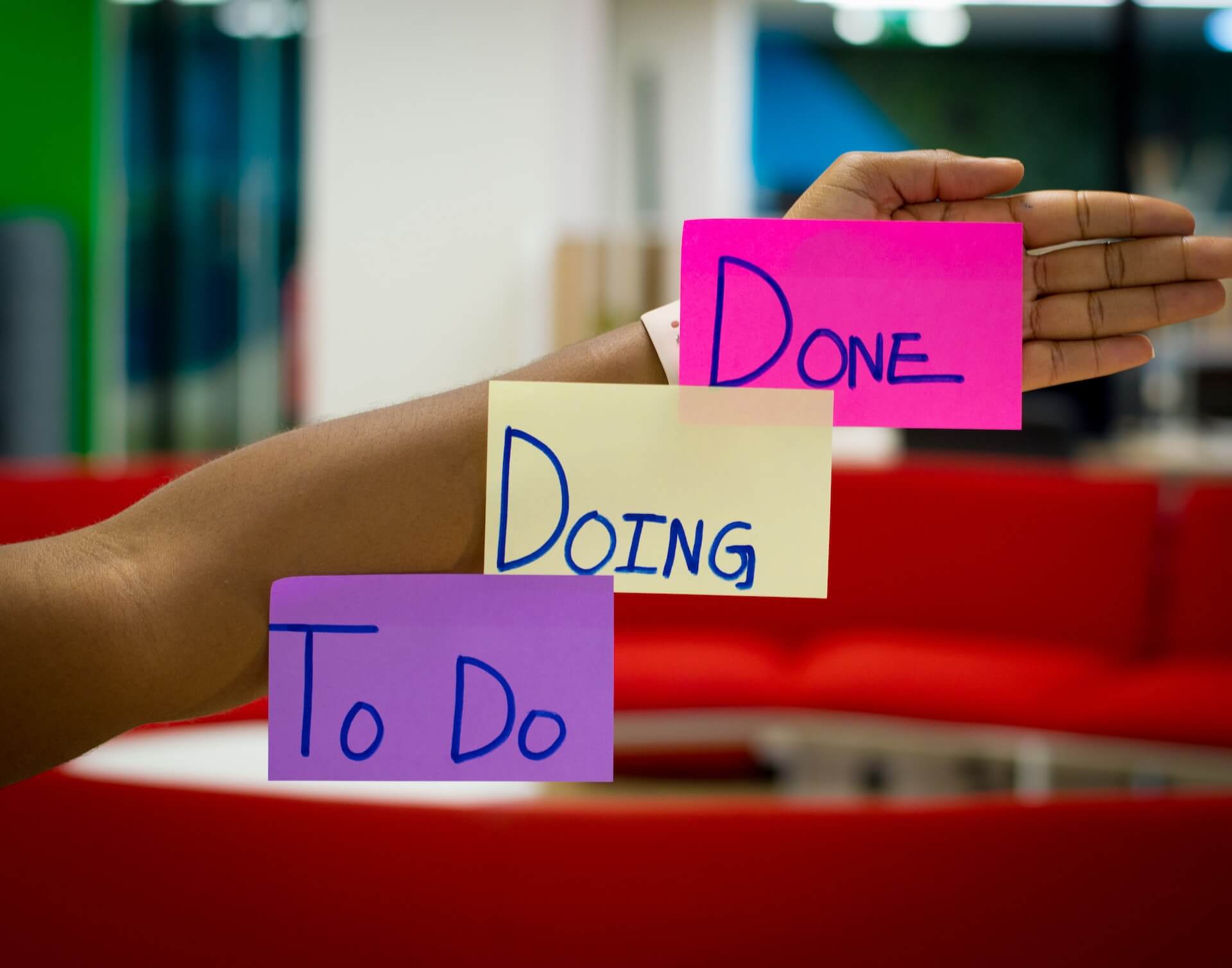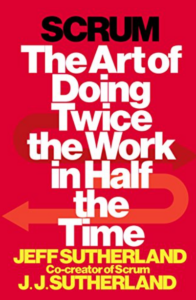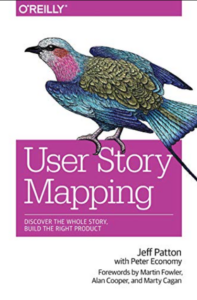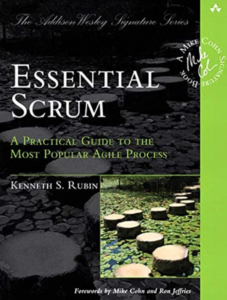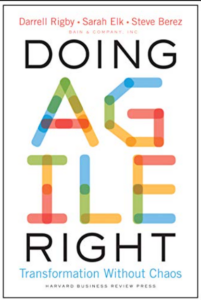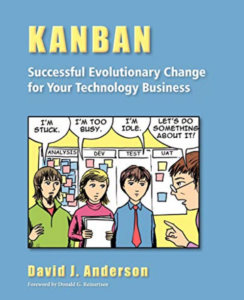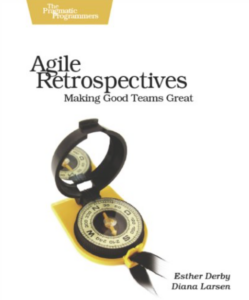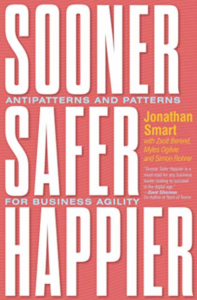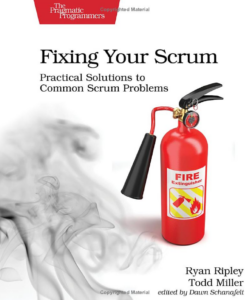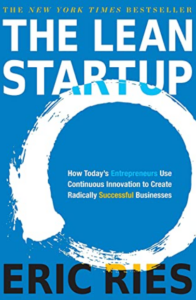Highly rated books related to agile
Adaptability and responsiveness have become more crucial than ever before. Enter agile methodology – a dynamic and flexible approach that has revolutionized the way teams tackle projects, deliver value, and embrace change. Whether you’re a seasoned project manager, a software developer, or a curious mind eager to learn, delving into the world of agile can be a game-changer. This curated list of the best books on agile will guide you through the intricacies of this methodology. You can also apply techniques, tools, or activities from these books with a retrospective template or other agile templates or whiteboards. You might dive even deeper into the learning experience by engaging with your team in an agile culture workshop training.
1. Scrum: The Art of Doing Twice the Work in Half the Time
by Jeff Sutherland and J.J. Sutherland
In this enlightening book, Jeff and J.J. Sutherland introduce Scrum, a powerful framework that redefines teamwork and project management. Drawing on personal experiences and case studies, the authors unveil the principles of Scrum, illustrating how its collaborative and adaptive nature leads to increased efficiency and remarkable outcomes.
Amazon Description:
If you’ve ever been startled by how fast the world is changing, Scrum is one of the reasons why. Productivity gains of as much as 1200% have been recorded, and there’s no more lucid – or compelling – explainer of Scrum and its bright promise than Jeff Sutherland, the man who put together the first Scrum team more than twenty years ago.
The thorny problem Jeff began tackling back then boils down to this: people are spectacularly bad at doing things with agility and efficiency. Best laid plans go up in smoke. Teams often work at cross purposes to each other. And when the pressure rises, unhappiness soars. Drawing on his experience as a West Point-educated fighter pilot, biometrics expert, early innovator of ATM technology, and V.P. of engineering or CTO at eleven different technology companies, Jeff began challenging those dysfunctional realities, looking for solutions that would have global impact.
In this book you’ll journey to Scrum’s front lines where Jeff’s system of deep accountability, team interaction, and constant iterative improvement is, among other feats, bringing the FBI into the 21st century, perfecting the design of an affordable 140 mile per hour/100 mile per gallon car, helping NPR report fast-moving action in the Middle East, changing the way pharmacists interact with patients, reducing poverty in the Third World, and even helping people plan their weddings and accomplish weekend chores.
2. User Story Mapping: Discover the Whole Story, Build the Right Product
by Jeff Patton, Martin Fowler, Peter Economy, Alan Cooper, and Marty Cagan
Jeff Patton and a team of experts delve into the art of user story mapping, a technique that helps teams gain a comprehensive understanding of user needs and align product development accordingly. This guide offers practical insights on visualizing user stories, prioritizing features, and creating products that resonate with users.
Amazon Description:
User story mapping is a valuable tool for software development, once you understand why and how to use it. This insightful book examines how this often misunderstood technique can help your team stay focused on users and their needs without getting lost in the enthusiasm for individual product features.
Author Jeff Patton shows you how changeable story maps enable your team to hold better conversations about the project throughout the development process. Your team will learn to come away with a shared understanding of what you’re attempting to build and why.
3. Essential Scrum: A Practical Guide to the Most Popular Agile Process
by Kenneth Rubin
Kenneth Rubin provides an in-depth guide to Scrum, offering readers a comprehensive understanding of its principles, roles, and practices. This practical handbook equips individuals and teams with the knowledge needed to implement Scrum effectively, enhance collaboration, and drive successful project outcomes.
Amazon Description:
If you want to use Scrum to develop innovative products and services that delight your customers, Essential Scrum is the complete, single-source reference you’ve been searching for. Leading Scrum coach and trainer Kenny Rubin illuminates the values, principles, and practices of Scrum, and describes flexible, proven approaches that can help you implement it far more effectively.
Whether you are new to Scrum or years into your use, this book will introduce, clarify, and deepen your Scrum knowledge at the team, product, and portfolio levels. Drawing from Rubin’s experience helping hundreds of organizations succeed with Scrum, this book provides easy-to-digest descriptions enhanced by more than two hundred illustrations based on an entirely new visual icon language for describing Scrum’s roles, artifacts, and activities.
Essential Scrum will provide every team member, manager, and executive with a common understanding of Scrum, a shared vocabulary they can use in applying it, and practical knowledge for deriving maximum value from it.
4. Doing Agile Right: Transformation Without Chaos
by Darrell Rigby, Sarah Elk, and Steve Berez
Darrell Rigby, Sarah Elk, and Steve Berez offer a roadmap for organizations seeking to embark on a successful Agile transformation journey. By dispelling common myths and addressing challenges, this book outlines a pragmatic approach to Agile adoption that fosters lasting change and meaningful results.
Amazon Description:
For decades business leaders have been painfully aware of a huge chasm: They aspire to create nimble, flexible enterprises. But their day-to-day reality is silos, sluggish processes, and stalled innovation. Today, agile is hailed as the essential bridge across this chasm, with the potential to transform a company and catapult it to the head of the pack.
Not so fast. In this clear-eyed, indispensable book, Bain & Company thought leader Darrell Rigby and his colleagues Sarah Elk and Steve Berez provide a much-needed reality check. They dispel the myths and misconceptions that have accompanied agile’s rise to prominence–the idea that it can reshape an organization all at once, for instance, or that it should be used in every function and for all types of work. They illustrate that agile teams can indeed be powerful, making people’s jobs more rewarding and turbocharging innovation, but such results are possible only if the method is fully understood and implemented the right way.
The key, they argue, is balance. Every organization must optimize and tightly control some of its operations, and at the same time innovate. Agile, done well, enables vigorous innovation without sacrificing the efficiency and reliability essential to traditional operations. The authors break down how agile really works, show what not to do, and explain the crucial importance of scaling agile properly in order to reap its full benefit. They then lay out a road map for leading the transition to a truly agile enterprise.
Agile isn’t a goal in itself; it’s a means to becoming a high-performance operation. Doing Agile Right is a must-have guide for any company trying to make the transition–or trying to sustain high agility.
5. Kanban: Successful Evolutionary Change for Your Technology Business
by David J. Anderson
David J. Anderson introduces Kanban, a visual framework that promotes evolutionary change and enhances workflow efficiency. Through insightful case studies and practical advice, readers discover how to optimize processes, manage work-in-progress, and achieve incremental improvements in their technology businesses.
Amazon Description:
Kanban is becoming a popular way to visualize and limit work-in-progress in software development and information technology work. Teams around the world are adding kanban around their existing processes to catalyze cultural change and deliver better business agility.This book answers the questions:What is Kanban?Why would I want to use Kanban?How do I go about implementing Kanban?How do I recognize improvement opportunities and what should I do about them?
6. Agile Retrospectives: Making Good Teams Great
by Esther Derby and Diana Larsen
Derby and Diana Larsen delve into the power of retrospectives, a crucial component of Agile methodologies. This book guides teams through effective retrospective practices, helping them uncover valuable insights, address challenges, and foster a culture of continuous learning and improvement.
Amazon Description:
See how to mine the experience of your software development team continually throughout the life of the project. The tools and recipes in this book will help you uncover and solve hidden (and not-so-hidden) problems with your technology, your methodology, and those difficult “people” issues on your team.
Project retrospectives help teams examine what went right and what went wrong on a project. But traditionally, retrospectives (also known as “post-mortems”) are only helpful at the end of the project–too late to help. You need agile retrospectives that are iterative and incremental. You need to accurately find and fix problems to help the team today.
Now, Derby and Larsen show you the tools, tricks, and tips you need to fix the problems you face on a software development project on an on-going basis. You’ll see how to architect retrospectives in general, how to design them specifically for your team and organization, how to run them effectively, how to make the needed changes, and how to scale these techniques up. You’ll learn how to deal with problems, and implement solutions effectively throughout the project–not just at the end.
With regular tune-ups, your team will hum like a precise, world-class orchestra.
7. Sooner Safer Happier: Antipatterns and Patterns for Business Agility
by Jonathan Smart
Jonathan Smart presents a collection of antipatterns and patterns for achieving business agility. By exploring real-world scenarios, the book provides actionable strategies to avoid common pitfalls and leverage best practices, ultimately enabling organizations to become sooner, safer, and happier in their pursuit of agility.
Amazon Description:
Being Agile isn’t the goal; the true goal is successful outcomes. And successful outcomes come from embracing business principles that engender high-performing organizations, not from following a formula.
The award-winning Sooner Safer Happier lays the foundation for achieving what truly matters: delivering better value sooner, safer, and happier. Every chapter of this practical guide to business success clearly articulates the typical ways of working that organizations get wrong (antipatterns) and quickly follows them with what to do right (patterns). Each pattern helps empower teams and leaders and allows the organization as a whole to break free of prescribed Agile practices to achieve true agility and success.
8. Fixing Your Scrum: Practical Solutions to Common Scrum Problems
by Ryan Ripley and Todd Miller
Ryan Ripley and Todd Miller address common challenges and roadblocks that Scrum teams often encounter. Through practical solutions and actionable insights, this book equips Scrum practitioners with the tools needed to overcome obstacles, optimize their processes, and achieve better outcomes.
Amazon Description:
Broken Scrum practices limit your organization’s ability to take full advantage of the agility Scrum should bring: The development team isn’t cross-functional or self-organizing, the product owner doesn’t get value for their investment, and stakeholders and customers are left wondering when something–anything–will get delivered. Learn how experienced Scrum masters balance the demands of these three levels of servant leadership, while removing organizational impediments and helping Scrum teams deliver real-world value. Discover how to visualize your work, resolve impediments, and empower your teams to self-organize and deliver using advanced coaching and facilitation techniques that honor and support the Scrum values and agile principles. A Scrum Master needs to know when their team is in trouble and understand how to help them get back on the path to delivery. Become a better Scrum master so you can find the problems holding your teams back. Has your Daily Scrum turned in to a meeting? Does your team struggle with creating user stories? Are stakeholders disengaged during Sprint Review? These issues are common.
Learn to use empiricism as your guide and help your teams create great products. Scrum is so much more than a checklist of practices to follow, yet that’s exactly how many organizations practice it. Bring life back to your Scrum events by using advanced facilitation techniques to leverage the full intelligence of your team. Improve your retrospectives with new formats and exercises. Ask powerful questions that spark introspection and improvement. Get support and buy-in from management. Use Scrum as a competitive advantage for your organization. Create a definition of done that improves quality and fix failing sprints. Take the next step on your journey as a Scrum master. Transform your Scrum practices to help your teams enjoy their work again as they deliver high quality products that bring value to the world.
9. The Lean Startup: How Today’s Entrepreneurs Use Continuous Innovation to Create Radically Successful Businesses
by Eric Ries
Eric Ries presents a transformative approach to entrepreneurship, emphasizing continuous innovation and lean practices. Through real-world examples, Ries guides entrepreneurs to build and scale successful businesses by embracing rapid experimentation, validated learning, and iterative development, all while minimizing wasted time and resources.
Amazon Description:
Eric Ries defines a startup as an organization dedicated to creating something new under conditions of extreme uncertainty. This is just as true for one person in a garage or a group of seasoned professionals in a Fortune 500 boardroom. What they have in common is a mission to penetrate that fog of uncertainty to discover a successful path to a sustainable business.
The Lean Startup approach fosters companies that are both more capital efficient and that leverage human creativity more effectively. Inspired by lessons from lean manufacturing, it relies on “validated learning,” rapid scientific experimentation, as well as a number of counter-intuitive practices that shorten product development cycles, measure actual progress without resorting to vanity metrics, and learn what customers really want. It enables a company to shift directions with agility, altering plans inch by inch, minute by minute.
Rather than wasting time creating elaborate business plans, The Lean Startup offers entrepreneurs—in companies of all sizes—a way to test their vision continuously, to adapt and adjust before it’s too late. Ries provides a scientific approach to creating and managing successful startups in a age when companies need to innovate more than ever.
Best Books on Agile Conclusion
As we conclude this exploration into the world of agile through the lens of these exceptional books, one thing becomes abundantly clear – the principles of agile extend far beyond project management and software development. They embody a mindset that embraces change, encourages collaboration, and empowers teams to excel in an ever-shifting landscape. These books on agile serve as beacons of knowledge, offering insights, strategies, and practical advice that can transform the way you approach work and problem-solving. By immersing yourself in these valuable resources, you’re not just learning about agile – you’re embarking on a journey towards continuous improvement, adaptability, and a future where you’re better equipped to navigate the challenges and opportunities that lie ahead.
Books like these helped us as we were researching to develop our first agile training for organizations years ago. Just contact us if you are interested in an innovative workshop training on agile culture for your organization of group.
